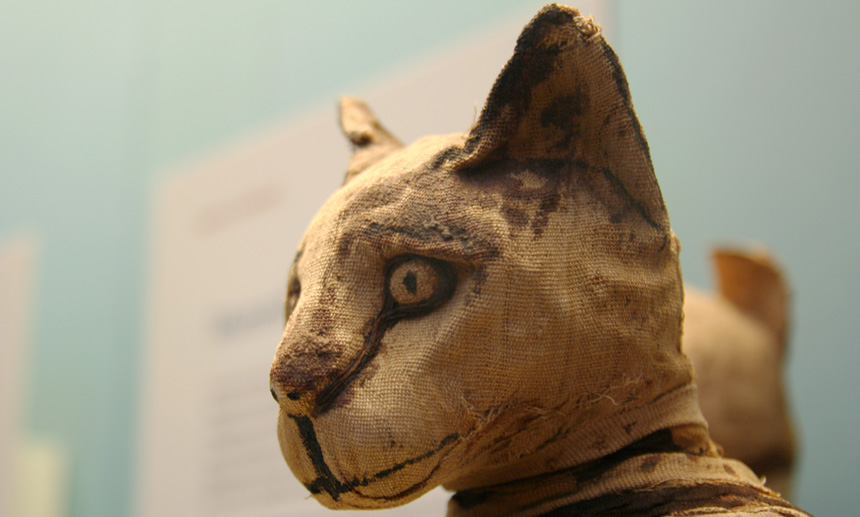Animal mummies were a message direct to the gods

Millions of animals were mummified by the ancient Egyptians, such as this cat, which now sits in the British Museum.
- More than 2 years ago
Ancient Egyptians killed a lot of animals and turned them into mummies, but the purpose for such sacrifices isn’t always clear. At the highest levels of Egyptian society, people were buried with their mummified pets, presumably because they were beloved animals. Many tombs also included mummified animal meat, such as whole ducks and the forelegs of bulls, probably meant to feed the human occupant in the afterlife. A few animals were considered to be incarnations of gods, and animal cults mummified them.
Most animal mummies, however, have been found in vast animal cemeteries. The dog cemetery at Saqqara, for instance, contains 7 million mummies. The traditional view of these sacrifices is that they were votive offerings, symbolic gestures or offerings similar to lighting a candle in a Catholic church. Other theories, which aim to account for the huge numbers of dead animals, suggest that the mummies came from pilgrimage festivals, or that Egyptian soldiers were required to offer animal mummies as part of an annual royal new year’s celebration.
But perhaps these animals served a slightly different, and even more important, role in Egyptian life. Edward Bleiberg, curator of Egyptian, classical and ancient Near Eastern art at the Brooklyn Museum, has proposed a new theory: The mummies were messengers to the gods. “Animals could facilitate interactions between people and the gods because the animal, once it was mummified, was the ba [soul] of the god with which it was associated,” Bleiberg writes in Soulful Creatures: Animal Mummies in Ancient Egypt, which was published late last year. (The book accompanies an exhibition that will be at the Bowers Museum in Santa Ana, Calif., later this year.)
The Egyptians, Bleiberg says, believed that at least some animals possessed pieces of the soul, or ba, of a god, and that ba could act as a messenger between a person and the gods. “A request made with a human voice could direct the animal ba toward the god to which the animal was linked and communicate a request for divine intervention,” Bleiberg writes.
Most animal mummies contain only the animal and wrappings (even then, some were fake) and maybe a container, but a few also carried written messages to the gods. These messages included complaints, often followed by polite requests. A writer might ask that “justice be procured” following a crime or that a curse be placed on someone who has done evil. Some of the messages are bargains with a god, promising money or goods to that god’s temple in exchange for mercy or assistance.
“The people who added a written record of their communications with the gods must have had the means either to write the letter themselves or to hire a scribe to write it for them,” Bleiberg notes. That would explain why most of the animal mummies have no notes — only a limited number of people could afford them. “An animal mummy was just one element of a complex ritual performed by an Egyptian who was trying to solve a problem that required help from a god,” Bleiberg writes. That ritual, with or without a written note, probably included oral communications with whatever message the person who bought the mummy wanted to send to the gods.
Judging by the scale of these animal sacrifices, ancient Egyptians must have had a lot to say to their gods. Science News-Letter noted back in 1929:
Nearly one hundred different mammals, birds, reptiles, and fish were regarded as sacred to various gods in ancient Egypt, and their bodies were mummified by thousands…. The cost of this religious procedure was enormous. More than two hundred yards of fine linen cloth, a half yard wide, were needed for the wrapping of a single bull…. Birds of the hawk and falcon type were also abundantly preserved, as was the Egyptian kite…. Packages contain as many as forty birds, each mummified and dipped in pitch before wrapping.







